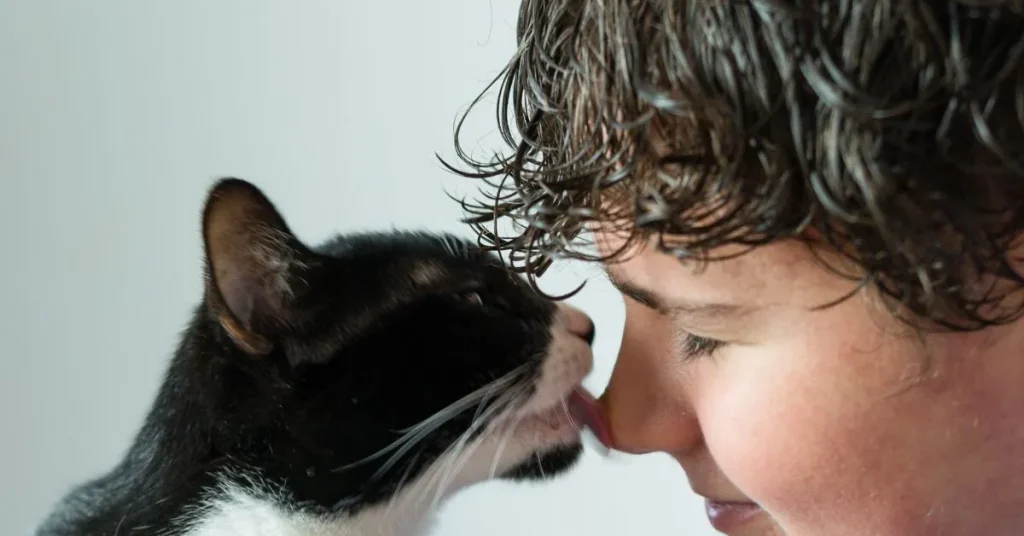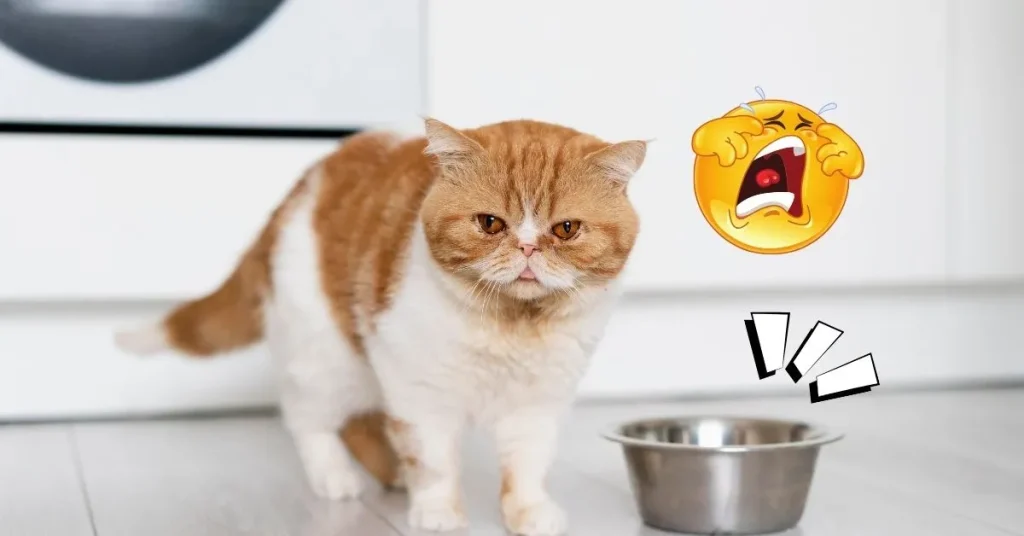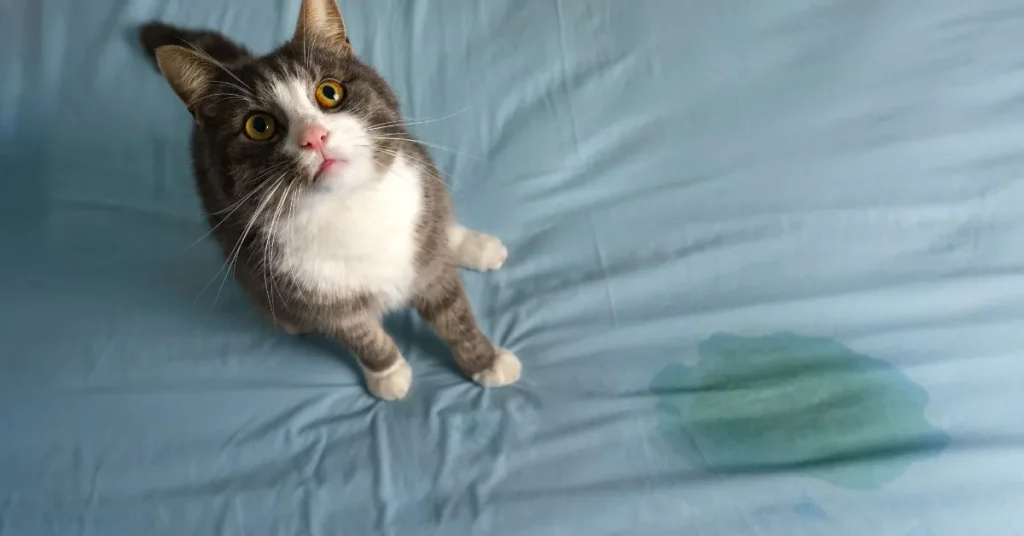If you’re a cat owner, you’ve probably experienced the feeling of your feline friend showering you with affectionate licks. But have you ever wondered, “What does it cruel when a cat licks you?” In this article, we’ll dive into the different reasons behind this common cat behavior, investigating the noteworthiness of cat licking and what it communicates approximately your bond with your hairy companion.
Understanding Cat Licking Behavior
Cat licking, also known as “all grooming,” is a characteristic behavior watched in tamed cats and their wild partners. Whereas cats essentially prep themselves to keep up cleanliness and control body temperature, they too lock in in licking as a shape of social holding and communication.
Key Reasons Why Cats Lick Humans
Affection and Holding: One of the essential reasons cats lick their human companions is to express fondness and reinforce social bonds. Licking discharges feel-good hormones called endorphins in both cats and people, fortifying positive sentiments and advancing a sense of closeness.
Mimicking Maternal Care: Cats’ impulses to lick their moms as an implies of requesting care and consideration. Grown-up cats may proceed with this behavior into adulthood, licking their human caregivers as a shape of support and care taking.
Social Pecking Order and Preparing Customs: In multi-cat families, prepping serves as an implies of building up and strengthening social progressions. Overwhelming cats may prep subordinate cats as a show of specialism and solidarity. Essentially, cats may prep their human companions as a sign of belief and consideration inside their social group.
Sensory Investigation: Cats utilize their tongues to investigate and examine their environment, counting objects, surfaces, and indeed human skin. Licking permits cats to assemble data through fragrance and taste, making a difference in them familiarizing themselves with their environment and distinguishing new fragrances or substances.
Stress Decrease: Licking can have an alleviating and calming impact on both cats and people, making a difference in lightening stretch and uneasiness. Cats may lick their proprietors amid times of unwinding or holding to give consolation and reassurance.
Attention-Seeking Behavior: A few cats may lick their proprietors as an implication of looking for consideration or love. By locking in licking behavior, cats can inspire a reaction from their human caregivers and fulfill their social and passionate needs.
Soothing Sore or Harmed Ranges: Cats have an intrinsic intuition to prep and clean wounds or chafed regions on their claim bodies. In a few cases, cats may lick their owners’ skin as a way of relieving minor wounds, creepy crawly chomps, or skin irritations.
Taste and Surface Inclination
Cats have personal inclinations when it comes to taste and surface. A few cats may appreciate the taste or surface of their owner’s skin, driving them to lock in licking behavior as a pleasurable activity.
Decoding Cat Licking Patterns
While cat licking is for the most part a sign of fondness and holding, the setting and recurrence of licking behavior can give profitable experiences in a cat’s eager and passionate state. Here are a few common designs of cat licking and their potential meanings:
Gentle, Moderate Licking: Moderate, consider licking went with murmuring and manipulating is frequently a sign of profound fondness and satisfaction. Cats may lock in this behavior when snuggling with their proprietors or amid minutes of relaxation.
Excessive or Over-the-Top Licking: Intemperate licking, especially centered on one zone of the body, may demonstrate basic therapeutic issues or behavioral issues. Cats may compulsively lick due to push, uneasiness, sensitivities, or skin bothering, requiring veterinary consideration to address the fundamental cause.
Abrupt or Hindered Licking: Unexpected or hindered licking may happen when a cat is startled, diverted, or feels awkward. Cats may suddenly halt licking if they see a danger or if their proprietor moves abruptly, disturbing the preparation session.
Mutual Preparing: Common prepping, where two cats prep each other proportionally, is a common social behavior watched among fortified cats. When cats look in common prepping with their human companions, it reflects a solid bond and shared belief between the cat and their owner.
Licking After Petting or Taking Care of: A few cats may lick their owners’ hands or skin after being petted or dealt with as a way of responding to warmth and keeping up social contact. This behavior fortifies the bond between the cat and their proprietor and signals a want for proceeded interaction.
Responding to Cat Licking
As a cat proprietor, it’s critical to react fittingly to your cat’s licking behavior to cultivate a positive and commonly fulfilling relationship. Here are a few tips for reacting to cat licking:
Acknowledge and Appreciate Warmth: When your cat licks you, react emphatically by advertising verbal commend, delicate petting, or loving words. Recognizing your cat’s warm motions fortifies the bond between you and energizes and encourages social interaction.
Set Boundaries: Whereas cat licking is for the most part a sign of fondness, it’s basic to build up boundaries to anticipate undesirable or over-the-top licking. If your cat’s licking gets to be awkward or troublesome, tenderly divert their behavior by advertising an elective movement or giving a toy for them to center on.
Monitor for Signs of Stretch or Distress: Pay consideration to your cat’s body dialect and behavior amid licking sessions. If your cat shows up tense, on edge, or shows signs of trouble, such as expanded understudies or smoothed ears, provide them space and maintain a strategic distance from constraining interaction until they feel more relaxed.
Address Basic Restorative Issues: If your cat shows over-the-top or compulsive licking behavior, counsel your veterinarian to run the show out of basic therapeutic issues or behavioral issues. Tending to any fundamental well being concerns is fundamental for guaranteeing your cat’s physical and passionate well-being.
Conclusion
In conclusion, cat licking is a multifaceted behavior that serves as an implication of communicating love, holding, and communication between cats and their human companions. Understanding the reasons behind cat licking and interpreting its different designs can offer assistance to cat proprietors to extend their bond with their cat companions and react fittingly to their needs.
Whether your cat licks you as a sign of warmth, looks for consolation amid times of push, or appreciates the taste and surface of your skin, grasping and responding to their warm motions can fortify your relationship and make enduring recollections of adore and companionship.



